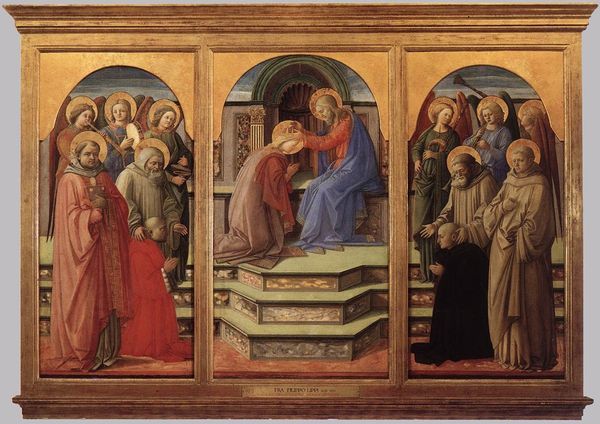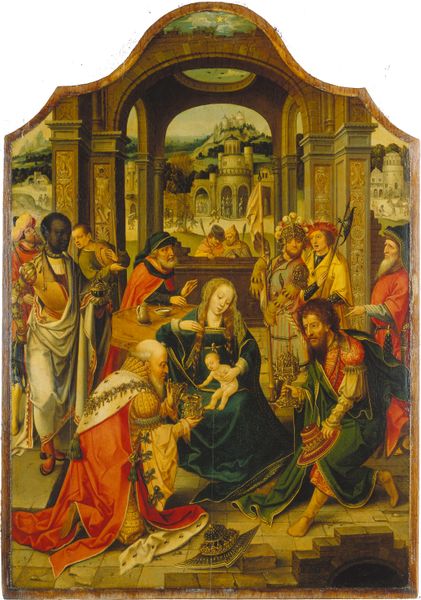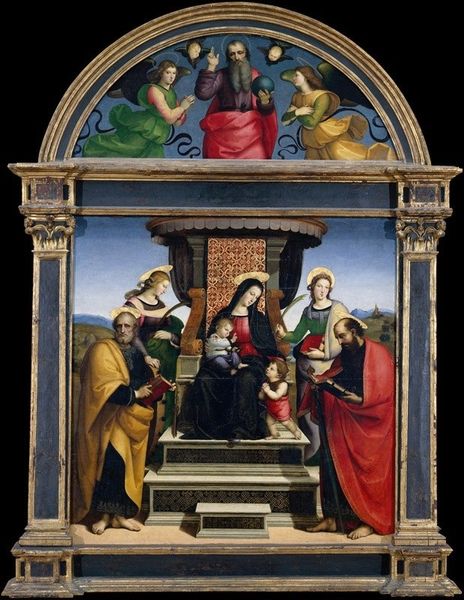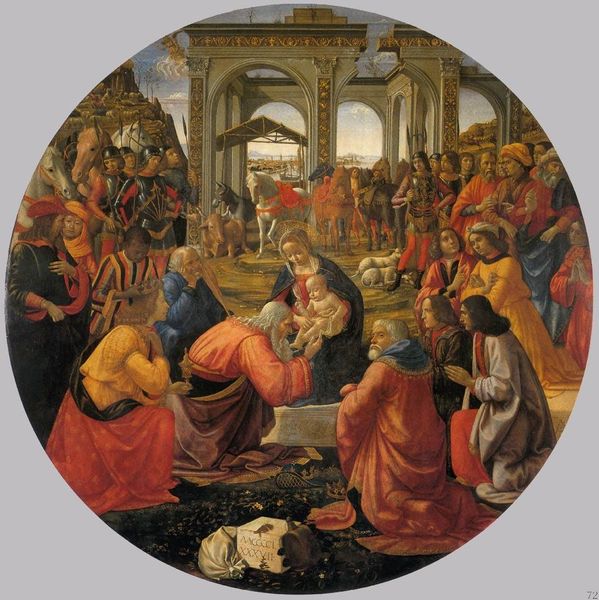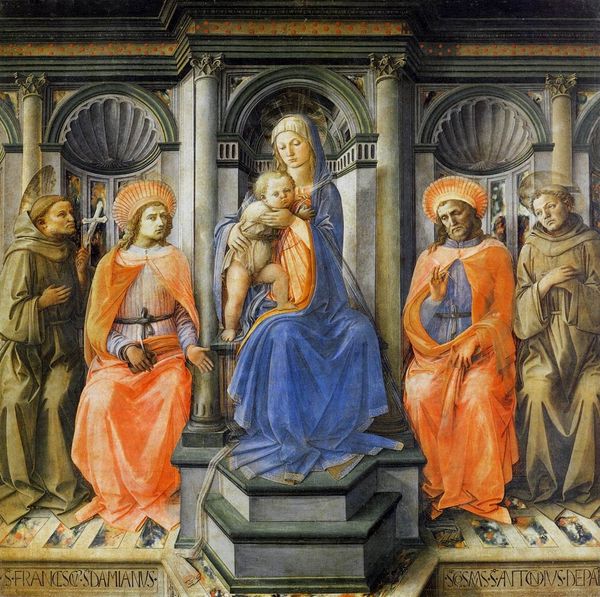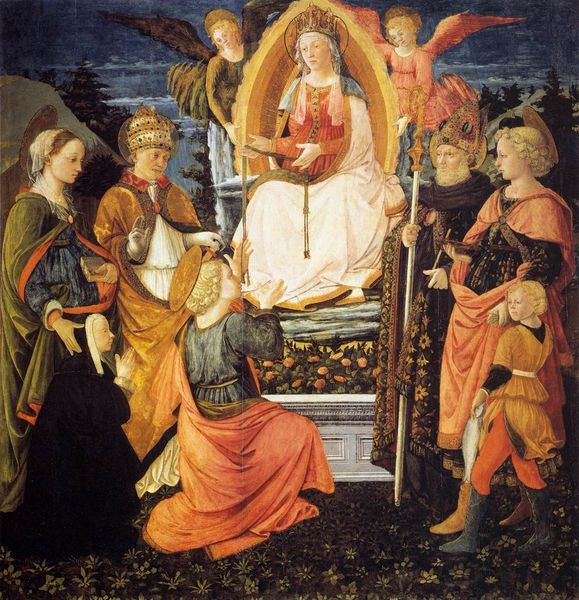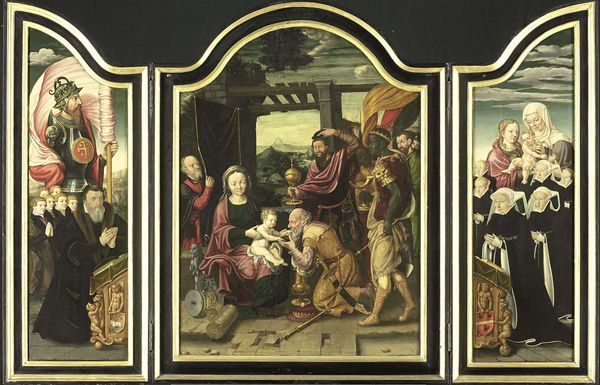
Triptych of Jan Floreins 1479
0:00
0:00
hansmemling
Memling Museum (Old St. John's Hospital), Bruges, Belgium
panel, tempera, painting, photography
#
portrait
#
panel
#
narrative-art
#
tempera
#
painting
#
figuration
#
photography
#
northern-renaissance
#
early-renaissance
Dimensions: 48 x 107.5 cm
Copyright: Public domain
Curator: Standing before us is the "Triptych of Jan Floreins", a remarkable tempera on panel piece completed in 1479 by Hans Memling. It is currently housed at the Memling Museum here in Bruges. Editor: My initial impression is that the work achieves a delicate balance between its disparate scenes. There’s a stillness that pervades it, despite the narratives unfolding. The colours are muted, contributing to an overall serene mood. Curator: Indeed. Memling was a master of serene devotional imagery, and this triptych, commissioned for the altar of the Old St. John's Hospital, serves as a prime example. We see the adoration of the Magi in the central panel, flanked by scenes depicting the birth of Christ and the Presentation in the Temple. Editor: Formally speaking, I’m drawn to the symmetry he establishes across the three panels. While the subject matter differs, the figures’ placement and the architectural elements create visual harmony. There’s a rhythmic flow that guides the eye. Curator: The hospital setting adds another layer. Religious orders played a central role in healthcare at the time and Florentius was both the hospital brother and a member of a well connected patrician family in Bruges, therefore this image reinforces the virtues of their commitment to the poor and sick. It was common practice to include images that further justified the role of these men as intercessors. Editor: Look at how the artist's attention to texture enhances the realism! The subtle rendering of fabrics, and the detailed expressions lend a tangible quality. It's like looking at a stage with meticulously crafted props and actors. Curator: Absolutely, these elements are hallmarks of the Northern Renaissance style that Memling mastered, especially how it merges his adopted Flemish tradition with aspects of Italian humanism and spatial understanding, and while Florentius is unnamed in this depiction he is symbolically represented by one of the adoration figures, suggesting the influence he would bring as a mediator between humanity and the divine, given the hospital location. Editor: Considering its intricate design and narrative richness, this piece remains a beautiful testament to a particular vision and faith. It speaks across the centuries. Curator: It illustrates the powerful synergy of patronage, artistic skill, and socio-political forces, offering viewers a window into both artistic practices and cultural beliefs of its era.
Comments
No comments
Be the first to comment and join the conversation on the ultimate creative platform.

